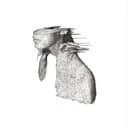Theoretical Construction and the Augmented Second
The C-sharp Harmonic Major scale (C♯–D♯–E♯–F♯–G♯–A–B♯–C♯) is constructed by taking the C-sharp Major scale and lowering its sixth degree by one semitone, transforming A♯ to A natural. This alteration creates an augmented second interval (three semitones) between the minor sixth (A) and major seventh (B♯), which is the defining characteristic of all harmonic major scales. The interval pattern is: whole step, whole step, half step, whole step, half step, augmented second, half step. This scale contains both major and minor qualities simultaneously—the major third (E♯/F) establishes major tonality while the minor sixth (A) adds a melancholic or exotic color. The augmented second interval is rarely found in traditional Western scales, making harmonic major scales sound distinctive and non-diatonic to Western ears.
When analyzing the scale's intervallic structure from the root, we find: major second (D♯), major third (E♯), perfect fourth (F♯), perfect fifth (G♯), minor sixth (A), and major seventh (B♯). The combination of major third and minor sixth is particularly unusual in Western music theory, as most scales maintain either major quality (major third and major sixth) or minor quality (minor third and minor sixth) throughout. This hybrid quality makes the C-sharp Harmonic Major scale particularly useful for modal interchange and creating harmonic tension. The scale relates closely to A-sharp Harmonic Minor (as its relative harmonic minor) and can be thought of as the third mode of A Melodic Minor. Its enharmonic equivalent, D-flat Harmonic Major, offers the same sound with more readable notation for flat-key contexts.
Historical Context and Musical Applications
The harmonic major scale emerged as a theoretical construct in the 19th century, though composers had been using its characteristic sound through chromatic alterations for decades prior. Unlike the harmonic minor scale, which has deep roots in Western classical music and was standardized for functional harmony, the harmonic major scale appears less frequently in traditional repertoire. However, it gained prominence in late-Romantic and early-20th-century music when composers sought exotic colors and chromaticism. The augmented second interval, reminiscent of traditional Middle Eastern and klezmer music, made harmonic major scales attractive for evoking foreign or mystical atmospheres in programmatic works and opera.
In contemporary music, the C-sharp Harmonic Major scale has found extensive use in film scoring, particularly for scenes requiring tension, mystery, or exotic locales. Composers like John Williams, Hans Zimmer, and James Newton Howard have employed harmonic major sonorities to create dramatic moments that feel both familiar (due to the major third) and unsettling (due to the minor sixth and augmented second). In jazz and fusion contexts, harmonic major scales offer rich possibilities for modal improvisation and reharmonization. The scale works particularly well over augmented triads and altered dominant chords. Contemporary musicians exploring world music fusion often incorporate harmonic major scales to blend Western harmonic structures with non-Western melodic sensibilities, creating a bridge between traditional major tonality and more exotic modal systems.
Harmonic Possibilities and Chord Progressions
The C-sharp Harmonic Major scale generates a unique set of diatonic chords that combine conventional major key harmony with unexpected chromatic colors. The tonic chord (C♯ major) remains stable, but the submediant chord built on A creates a major triad that feels borrowed from the parallel minor, creating an unusual chromatic relationship. The dominant seventh chord (G♯7) functions normally, but the scale also produces an augmented triad on the third degree (E♯aug: E♯–G♯–B♯) and a diminished triad on the sixth degree (Adim). These unconventional chord qualities enable rich harmonic progressions that can quickly shift between bright major tonality and darker, more ambiguous harmonic areas.
One effective chord progression is C♯maj7 – F♯maj7 – E♯aug – G♯7 – C♯maj7, which emphasizes the augmented triad while maintaining functional dominant resolution. Another approach is to use the scale for modal interchange, borrowing the ♭VI chord (A major) from C-sharp Major's parallel harmonic major to create unexpected harmonic color—for example, C♯ – A – F♯ – G♯7 – C♯. The scale's minor sixth degree allows for deceptive cadences that resolve to A instead of C♯, creating surprise in otherwise conventional progressions. Voice leading considerations become crucial when using this scale; the augmented second between A and B♯ should be handled carefully to avoid awkward melodic leaps, though this interval can be exploited deliberately for dramatic effect. The scale also works beautifully for creating tension before resolving to C-sharp Melodic Minor or C-sharp Major.
Practice Strategies and Scale Relationships
When practicing the C-sharp Harmonic Major scale, begin by thoroughly learning the C-sharp Major scale and identifying the sixth degree (A♯) that needs to be lowered to A natural. Practice playing both scales back-to-back to internalize the single-note difference and hear how dramatically one chromatic alteration changes the scale's character. Focus particular attention on the augmented second interval between A and B♯, as this wide leap can be challenging to sing and play in tune. Use call-and-response exercises where you play the scale ascending, then sing it back, ensuring you accurately reproduce the augmented second without defaulting to the more familiar whole-step or half-step intervals.
Understanding the C-sharp Harmonic Major's relationship to other scales enhances both theoretical knowledge and practical musicianship. The scale is enharmonically and intervallically identical to D-flat Harmonic Major, offering more readable notation in flat-key contexts. It shares all notes with A Melodic Minor (ascending), meaning you can think of C-sharp Harmonic Major as the third mode of A Melodic Minor. This relationship opens up the entire melodic minor system for exploration. Additionally, compare C-sharp Harmonic Major with C-sharp Harmonic Minor to understand how changing the third degree from major to minor affects the scale's emotional character while maintaining the exotic augmented second interval. Practice improvising over static C♯ major chords using this scale, then experiment with using it over ii-V-I progressions in C-sharp, treating it as a color scale for reharmonization. Finally, explore transposing the scale to other keys like F Harmonic Major or G Harmonic Major to build familiarity with the harmonic major sound across the entire tonal spectrum.





